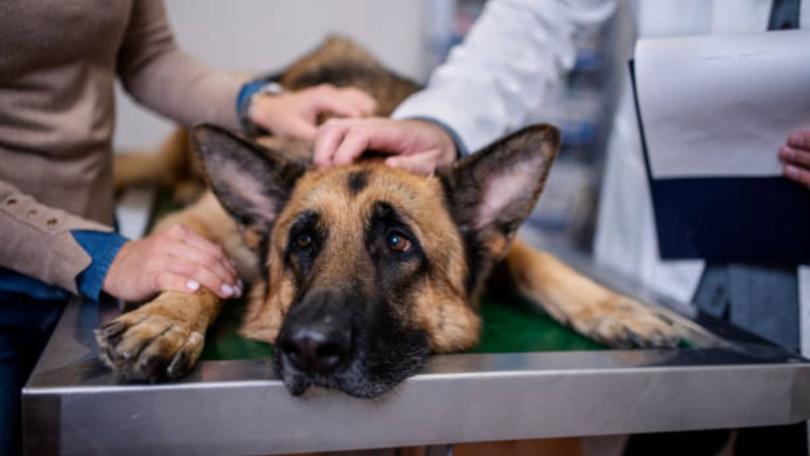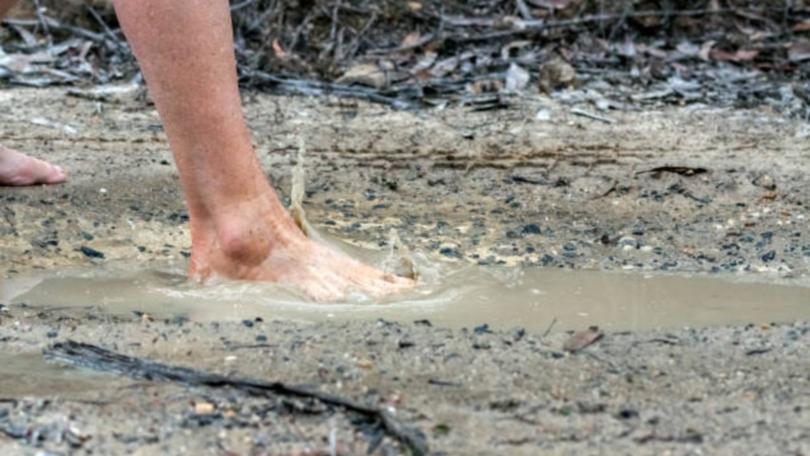Concerns grow over animal-to-human transmission of deadly melioidosis bacteria
A rare and deadly bacteria infection is raising serious concerns for pet owners across Queensland, with fears it could spread from animals to humans.
The bacteria that causes the tropical disease melioidosis thrive in soil and stagnant water and become active after heavy rainfall.
In the wake of recent floods across the state, more than 50 human infections and 20 deaths have been reported.
Sign up to The Nightly's newsletters.
Get the first look at the digital newspaper, curated daily stories and breaking headlines delivered to your inbox.
By continuing you agree to our Terms and Privacy Policy.The disease has also been found in pets, livestock, and wildlife, leaving many people wondering if their animals could be putting them at risk.
“The bacteria thrive in wet conditions, so we often see more cases in animals after heavy rains and flooding,” University of Sydney veterinary scientist Krysten Lee said.
First diagnosed in Australian sheep in 1949, melioidosis can affect pets when they inhale or ingest the bacteria or come into direct contact through cuts or eye exposure.
The infection can be deadly in both pets and people.
Now, many pet owners are asking: Could my animal companion pass it on to me?
For Tiara Richardson, the danger became heartbreakingly real when her two-year-old cat, Milo, was diagnosed with the disease.
“My sweet two-year-old tabby kitten, Milo, has just been diagnosed with melioidosis — a rare and life-threatening bacterial infection,” she wrote in an online plea for help with mounting veterinary costs.
“The treatment ahead is going to be long, intensive, and costly.
“But I’m not ready to give up on him and Milo isn’t either.”
Melioidosis is often fatal in animals if untreated, James Cook University’s Dr Philip Judge said.

What to look out for in pets
Experts say the disease is called “the great imitator”, often resembling other, more common, infections and delaying diagnosis.
“Melioidosis can present in many different ways, which is why diagnosis can often be difficult,” Lee said.
The disease can be challenging to diagnose due to its diverse clinical presentations, which often mimic other bacterial, fungal, or tumor-forming diseases, she added.
In domestic animals, particularly dogs and cats, Lee noted symptoms can range from respiratory issues to intestinal pain, leg weakness, and, in some cases, sudden death.
“Most commonly, we see skin wounds with pus that do not heal or keep recurring after antibiotics,” Lee said.
“If the infection reaches the brain, pets may experience symptoms like a head tilt, wobbliness on their feet, and weakness.
“Less commonly, it can cause swollen joints, sore eyes especially in cats, difficulty breathing, or blood in the urine.
“Commonly, pets will be lethargic and off their food due to a fever.”

Judge said: “While extensively studied in human medicine, melioidosis remains underdiagnosed and under-reported in veterinary medicine, despite being associated with significant morbidity and mortality in dogs and cats.
“If your pet shows unusual symptoms such as persistent coughing, weakness, or sudden behavioural changes, it’s crucial to consult a vet quickly.”
The outcome largely depends on the location of the infection and how quickly the diagnosis is made, allowing the correct treatment to be started.
“For many pets with skin infections, a complete recovery was achieved, whereas if the infection entered the brain or became widespread throughout the body it was often fatal,” Lee said.
“Treatment for melioidosis in pets typically involves long courses of two to three different antibiotics in combination, often paired with prolonged hospitalisation.“
However, no definite outcome is guaranteed.
“Relapse remains a major concern, and long-term follow-up is crucial for ensuring successful eradication of the infection,” Judge added.
Can pets give humans melioidosis?
As pet owners express growing concerns, experts remain divided on the likelihood of animals transmitting melioidosis directly to humans.
“This disease is a zoonosis, which means it has the potential to infect humans,” the Northern Territory Government has warned.
“Infection is of particularly high risk for immunocompromised people.”
According to the Merck Veterinary Manual, both animal-to-human and animal-to-animal transmission of the bacteria can happen after contact with contaminated environments.
Infected animals can spread the bacteria through fluids such as wound exudates, saliva, nasal secretions, milk, faeces, and urine.
That means infected pets may not pass the disease directly — but could still contribute to environmental contamination, especially in homes, gardens, or public spaces.
“There are no clearly documented cases of zoonotic transmission ... and the risk of such transmission is considered low,” the Department of Primary Industries and Regional Development said.
“Zoonotic potential exists, but transmission risk is low,” Judge said.
Lee agrees the risk to humans remains small but urges caution in certain situations.
“The risk of transmission from pets to humans is very low,” she said.
“In the few cases where owners and pets have both been diagnosed with this disease, it is usually due to exposure to the same environmental source.
“In saying that, standard precautions such as wearing gloves and thorough handwashing when dealing with infected wounds is important, and anyone who is immunosuppressed may need to take extra care and limit handling the animal.
“Vets should take care to avoid needle-stick injuries when dealing with infected patients,”
Early diagnosis matters — for pets and people
In both humans and pets, melioidosis can be treated with long-term antibiotics, but experts say delays in diagnosis increase the risk of serious illness or death.
As stories such as Milo’s show even small animals can become seriously ill.
Queensland Health emphasised the importance of early detection and prompt treatment to reduce the risk of severe complications and death.
“Early diagnosis is essential as the infection has a case-fatality rate of up to 50 per cent,” the department said.
The same applies to pets, Lee said.

With the risk of melioidosis lurking in wet soil and standing water, health authorities have urged residents to avoid contact with floodwaters and to keep pets away from muddy or flood-affected areas where the bacteria thrive.
Pet owners in areas affected by recent extreme wet weather events across Queensland and northern NSW are being advised to closely monitor any symptoms and maintain good hygiene practices.
Originally published on 7NEWS
